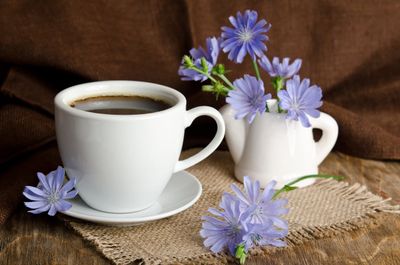What to Do with Chicory?
Chicory is a hardy perennial plant that comes from Eurasia where it grows in the wild. It was brought to the United States early in the country’s history. Today, it has naturalized and its clear, blue flowers can be seen growing along roadways and in other uncultivated areas, especially in the South. Chicory looks like a dandelion on steroids, but blue. It has the same deep taproot, deeper and thicker than a dandelion, and its stiff stalk can grow to 5 feet tall (2.5 m.) tall. The flowers that grow in the stem axils are between 1 and 2 inches (2.5 to 5 cm.) wide and a clear blue, with up to 20 ribbon-like ray petals. If you are wondering how to use chicory, you have many options. Some gardeners include it in the backyard plot for its ornamental value. The blue blossoms open early in the morning, but close up in the late morning or early afternoon. But there are numerous other chicory plant uses.
What is Chicory Used For?
If you ask about different chicory plant uses, be prepared for a long list. Anyone spending time in New Orleans is likely to be familiar with the most famous use of chicory: as a coffee substitute. How to use chicory as a coffee substitute? Chicory coffee is made from roasting and grinding the large taproot of the plant. But ways of using chicory from the garden are not limited to preparing a beverage. In ancient times, Egyptians cultivated this plant for medicinal purposes. Greeks and Romans also believed that eating the leaves promoted health. They used the leaves as a salad green, calling it the “Friend of the Liver.” This trend faded and by the 17th century, the plant was considered too bitter to go on the table. Instead, it was used for animal forage. In time, gardeners in Belgium found that the very young, pale leaves were tender if grown in the dark. Today, chicory is also used medicinally as a tea, especially in Europe. If you are wondering how to use chicory in this manner, you make the tea from chicory roots and use it as a laxative or for skin problems, fevers, and gallbladder and liver ailments. Disclaimer: The contents of this article is for educational and gardening purposes only. Before using or ingesting ANY herb or plant for medicinal purposes or otherwise, please consult a physician or a medical herbalist for advice.
